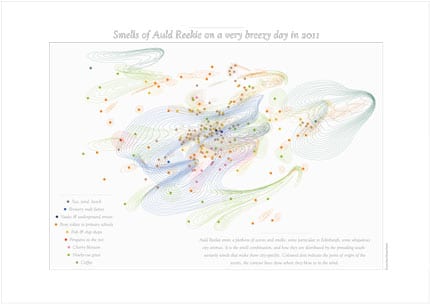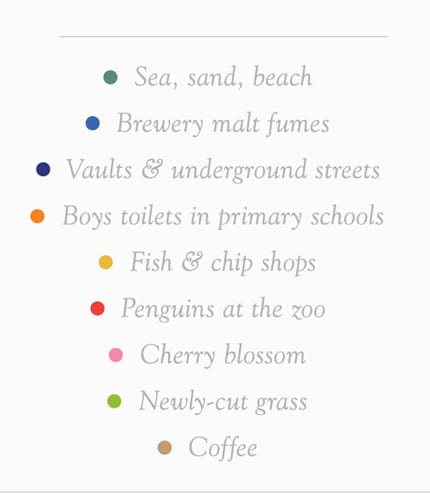More maps: From mapping the Brut to smellscapes
By uclfecd, on 2 October 2013
Following my last post, I’ve just come across three fantastic mapping projects which I had to share:
On the medieval side of things, the Imagining History project, which ran a few years ago at Queen’s University Belfast, have done some ingenious Tube-style maps of manuscripts of the Middle English prose Brut. This was one of the most widely-disseminated texts of the English Middle Ages, with 183 manuscripts having survived (to put this into perspective, there are 83 surviving manuscripts containing at least part of the Canterbury Tales), and mapping the connections between these is a complex task. However, as the project team suggest, the ‘information architecture’ provided by the Tube map is a very useful way of showing the various types of connections. With these maps, the ‘interchange stations’ are given different symbols to indicate manuscripts, the types of places owning or producing manuscripts, and people and places connected with manuscripts.
Moving to the present day, Victoria Henshaw of the University of Sheffield works on an entirely different kind of mapping: smellscapes! Her work traces the connections between cities and the smells associated with them, considering how scents such as grass, breweries, street food and drainage systems all influence our sense of place. As well as recently publishing a fascinating-looking book, Urban Smellscapes, she also leads ‘smellwalks’ through cities around the world, encouraging participants to think about the way in which smells contribute to our perception and memories of streets, squares and other public areas. Victoria is going to be running a smellwalk in London next month at UCL’s Institute of Making, so I’ll see if I can book a place!
Looking at Victoria’s work led me to researcher and designer Kate McLean, whose amazing maps on her website Sensory Maps chart the smellscapes, tastescapes and even touchscapes of Edinburgh, Paris and other cities. Beautiful works of art in their own right – have a look at the delicate paper-white tactile maps of Edinburgh, or the crayon-colourful contour lines of her smell maps – Kate’s maps bring a whole new range of sensory experience to the idea of the city map. Kate has also created several exhibitions related to her smell maps, where viewers are invited to sniff samples of the various scents, from fish and chips to penguins at the zoo. I’ll be keeping an eye out for the next one on her engaging blog, where she discusses her work on smells, smell-mapping, and even an experiment in bottling the scent of a horse.

Kate McLean, smell map of Edinburgh (reproduced by kind permission).
The coloured dots indicate the origins of scents; the contour lines show where the scents blow in the wind.
From mapping the Brut to the scents and reeks of Edinburgh, I hope you enjoy these maps!
 Close
Close





